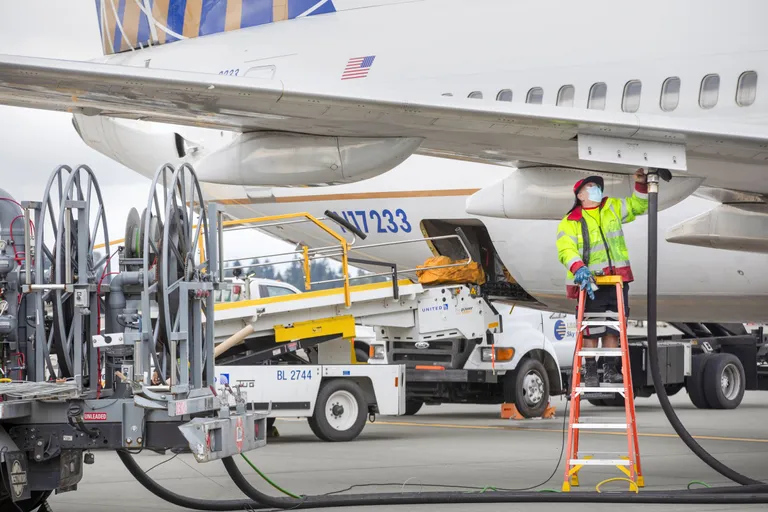
By Chris Raymond and Jon Holden
Special to The Times
Washington has been at the center of aviation since 1916, when Bill Boeing founded his airplane company in a shipyard on Seattle’s Duwamish River. Since then, the state has led the world in designing and manufacturing airplanes that have connected and protected people around the world. Aviation also facilitates the movement of $7 trillion worth of goods and provides humanitarian relief to countries around the globe, while creating 88 million jobs worldwide.
Our industry has pledged to reach net zero emissions by 2050. To meet this ambitious goal, aerospace manufacturers and airlines across the globe are committed to developing and flying planes that improve fuel efficiency and lower greenhouse gas emissions. While many initiatives can help reach this carbon-neutral status, none will contribute more than sustainable aviation fuels, or SAF.
Electric aircraft are being developed for short-hop travel. That technology, however, is too heavy to be feasible for the interstate and international flights that account for most of the industry’s emissions. Hydrogen holds some promise, but will require changes to the aircraft, engines and airports. It will also necessitate changes to how we generate electricity, to ensure enough so-called “green hydrogen” exists for aviation. Currently most hydrogen is produced from fossil fuels, potentially resulting in higher life cycle emissions than SAF-powered flight.
By contrast, SAF is dropped into today’s commercial jets and airport fueling infrastructure at the approved 50% blend with conventional jet fuel to mitigate life cycle emissions immediately. It recycles carbon by replacing traditional petroleum jet fuel with renewable, non-fossil raw material like fats, oils and grease, significantly reducing carbon emissions by up to 80% through the fuel’s life cycle. Future raw material could be municipal solid waste, agricultural waste, forestry waste, methane, industrial gases and waste gases.
The biggest challenge for SAF is increasing supply to meet demand and reduce its cost.
This year, Washington has the chance to make real strides in becoming a leader in this new frontier of aviation. Two bills will, if adopted, make Washington among the most competitive places in the world to produce and use SAF in commercial aviation.